Nonsan Gwanchoksa Temple (관촉사(논산))
11.6Km 2021-12-03
25, Gwanchok-ro 1beon-gil, Nonsan-si, Chungcheongnam-do
+82-41-736-5700
Gwanchoksa Temple in Nonsan, Chungcheongnam-do is located at the foot of Banyasan Mountain (100 meters in elevation). This temple enshrines a Seokjomireukbosalipsang Buddha (Treasure), which was built over the course of 38 years, beginning in 967 during the Goryeo period. According to legend, while a lady was picking fernbrake on Banyasan Mountain, she heard a baby crying. When she went over, there was no baby but instead was a large rock sticking out from the ground. Upon hearing this story, the government ordered a Buddha statue to be made from the rock. This Buddha statue, widely known as ‘Eunjimireuk Buddha,’ is the largest stone Buddha in Korea (18.12 meters in x_height, 9.9 meters in girth, 1.8 meters in the length of ears, 2.43 meters at the x_height of crown). There are many other cultural heritages in this temple and every April, a splendid cherry blossom tunnel stretching from Nonsan to Gwanchoksa Temple is at its peak.
Iksan Safety Experience Training Center (KOSHA) (익산 안전체험장(안전보건공단))
12.3Km 2025-07-30
127-49 Iksan-daero 78-gil, Hamyeol-eup, Iksan-si, Jeonbuk-do
Iksan Safety Experience Training Center is a safety training facility founded to raise public awareness on safety prevention and management, covering a wide variety of safety hazards that can occur in the everyday or workplace environment through fun and interactive content. The center uses VR and smart technology to simulate real-life emergency situations to educate the public on how to prevent and handle hazardous situations. It has 50 interactive content overall, spread out among six different themed halls. The training center is open to visitors of all ages for free.
Mireuksa Temple Site [UNESCO World Heritage] (익산 미륵사지 [유네스코 세계문화유산])
14.2Km 2024-04-07
362, Mireuksaji-ro, Iksan-si, Jeonbuk-do
+82-63-859-3873
Mireuksa was the largest Buddhist temple of the ancient Baekje Kingdom (18 BC-AD 660). According to Samgukyusa (historical records published in 1281), King Mu (30th king of Baekje, in power AD 600-641) and his wife Queen Seonhwa were said to have seen a vision of Mireuksamjon (the three Sanskrit) emerging from a large pond. At the time of their revelation, the king and queen were on their way to visit a Buddhist monk in Sajasa Temple on Yonghwasan Mountain (now known as Mireuksan Mountain). In response to their vision, the king drained the nearby pond and established Mireuksa Temple. The temple is believed to have shown the most advanced architectural and cultural skills of Baekje, Silla, and Goguryeo (the three main kingdoms at that time). Records indicate that King Jinpyeong of Silla even sent his craftsmen over to assist with the temple construction.
The two main features of the Mireuksa Temple Site are the stone pagoda (Mireuksaji Seoktap) and the flagpole supports (Mireuksaji Dangganjiju). The 14.24-meter-high west stone pagoda (National Treasure No. 11) is the oldest and largest Korean stone pagoda in existence. The west pagoda currently has only six tiers, but is estimated to originally have had nine. The nine-story east stone pagoda (27.67 meters in x_height) was restored to its original stature in 1993 based on historical records. Other surviving landmarks include the flagpole supports (Treasure No. 236) to the south of the stone pagodas. The 395 centimeter-tall poles are estimated to have been created during the Unified Silla period (AD 676-935) and are set 90 meters apart from east to west.
Buyeo Naseong Fortress [UNESCO World Heritage] (부여 나성 [유네스코 세계문화유산])
14.3Km 2021-07-22
100-11, Dongmun-ro142beon-gil, Buyeo-gun, Chungcheongnam-do
+82-41-830-2623
Buyeo Naseong, also known as the Outer City Wall, was built to protect the capital of Baekje, Sabi. It has a x_height of about 8.4 kilometers. The wall surrouned Busosanseong Fortress and extended to the city of Buyeo.
The wall is one of the oldest walls along with Naseong in Pyeongyang and it is estimated to have been built around 538, when the Baekje capital was changed from Woonjin (current Gongju) to Sabi (current Buyeo). The wall of the fortress starts from the site where Dongmun (East gate) was located to the area of Geumgang River, made by piling soil up. However, only a few traces remain of its former glory.
For now, it leaves a blurry trail including a 20 meter area to the east of Cheongsanseong Fortress, Dongmun Bridge from Seokmok-ri, and an area from Pilseobong Peak to Yeomchang-ri. While the outer wall is sharply sloped, the inner wall was built with a gentle slope to make it easier for horses to reach the guard posts on the top of the wall. Inside the fortress, the palace of Baekje, government offices, houses, temples, stores and protected facilities can be seen. The entire structure of Naseong Fortress features Geumgang River in the south and west sides, providing a natural double-defense system. The wall was one of the important outer defense facilities along with Cheongsanseong and Cheongmasanseong Fortresses.
* Area: 554,591 ㎡
Iksan National Museum (국립익산박물관)
14.3Km 2024-04-07
362, Mireuksaji-ro, Iksan-si, Jeonbuk-do
+82-63-830-0900
Iksan National Museum is located near Mireuksa Temple Site (Historic Site No. 150), one of the largest temples of the Baekje dynasty during the Three Kingdoms Period. A total of roughly 19,200 artifacts were unearthed during archaeological research in 1980-1996, and the museum was opened as Mireuksa Temple Site National Museum in 1997 to display these findings. The Stone Pagoda of Mireuksa Temple Site (National Treasure No. 11) was restored in 2009, and the site was recognized as a World Heritage by the UNESCO in 2015, afterwhich the museum name was changed to the current Iksan National Museum. The museum also offers various cultural events and programs, including on-site education, historical and cultural lectures, and summer culture school.
Nonsan Tapjeongho Suspension Bridge (논산 탑정호 출렁다리)
15.1Km 2022-12-29
Jongyeon-ri, Nonsan-si, Chungcheongnam-do
+82-41-746-6645
Tapjeongho Suspension Bridge is located in the second biggest lake in Chungcheongnam-do. With clear waters from Daedunsan Mountain filling the lake, visitors can enjoy beautiful sunsets as well as various water sports.
Iksan Ipjeomni Ancient Tombs (익산 입점리 고분)
15.4Km 2024-04-07
80, Ipjeomgobun-gil, Iksan-si, Jeonbuk-do
+82-63-859-5875
The Iksan Ipjeomni Ancient Tombs are a group of ancient Baekje-era tumuli located 100 meters above sea level on the northeast brow of Chilmokjae Hill in Ipjeom-ri, Iksan-si, Jeollabuk-do. The burial ground covers an area of more than 18,520 square meters and is officially listed as Historical Site No. 347. To date, a total of eight tumuli have been excavated, all of which are chamber tombs.
Surprisingly enough, the tombs were first discovered in 1986 by a high school student. While digging for arrowroot, a young man from a local high school found some pieces of gold that resembled a hat. He quickly notified the authorities and it was soon discovered that the pieces of gold were in fact valuable ancient artifacts. An emergency excavation was conducted and the eight tumuli were uncovered, but unfortunately all of the tumuli except Tomb No. 1 had been severely damaged. Tomb No. 1, which is still in relatively good condition, boasts an entrance measuring an impressive 16 meters in x_height and 2 meters in x_width.
Inside the tombs archaeologists found valuable relics from the Baekje dynasty including earthenware, jewelry (a gilt-bronze hat, gold earrings, glass beads, etc.), harnesses and ironware. Given the shapes and the types of the pieces found, historians estimate that the tumuli were built in the 5th century. Since the gilt-bronze hat is similar in shape to those found in Japan, experts believe that there was an active exchange between the Baekje people and the people of Japan.
Seodongyo Theme Park (서동요 테마파크)
15.6Km 2025-10-23
616 Chungsin-ro, Buyeo-gun, Chungcheongnam-do
+82-41-832-9913
Seodongyo Theme Park is an open film set studio in a huge 33,000 square meter plot of land. The theme park offers various sets from Goryeo to Joseon dynasty as well as royal residences of Baekje dynasty, the commoners’ village, the village of the nobles and more. The set was the backdrop of various dramas including “Ballad of Seodong (2005), “The Great Sheer (2012)” and more. Visitors can also engage in various experience programs.
◎ Travel information to meet Hallyu’s charm - TV series "Moon Lovers: Scarlet Heart Ryeo"
Seodongyo Theme Park is a Baekje-themed set. The buildings that preserve the traditional architectural style and quaint scenery will make you feel like you’ve traveled back in time along with Hae-soo.
Banyasa Temple (반야사(논산))
15.7Km 2024-10-04
104 Samjeon-gil, Gayagok-myeon, Nonsan-si, Chungcheongnam-do
Banyasa Temple is a unique temple with many of its buildings located in an old mine shaft. Upon first sight, visitors may feel disappoint at what appears to be simply the Daeungjeon Hall standing before a rock cliff. However, walking behind the main hall leads to the entrance to the mine. Because the mine shaft is cool in summer and warm in winter, it's a great attraction to visit all year round.
Geumma Reservoir (금마저수지)
16.0Km 2024-04-07
Donggodo-ri, Geumma-myeon, Iksan-si, Jeonbuk-do
+82-63-859-3818
Looking towards the south from the top of Mireuksan Mountain, one can see Geumma Reservoir. The reservoir is shaped like the Korean peninsula. Hence it is also referred to as Jido Yeonmot, or Map Pond. The terrain is especially beautiful when viewing it through the fog in the early mornings.
The water comes from Mireuksan Mountain, ensuring a steady supply of water throughout the year. There are no factories or other contaminants nearby so the water quality is of the highest grade. Near the reservoir, one can find Seodong Park and Mahan Hall. Seodong Park is a sculpture park displaying various sculptures such as a bronze statue of Baekje’s King Muwang of Baekje and a statue of Seodong’s Princess Seonhwa. Mahan Hall showcases the lifestyle and culture of Mahan, a tribal confederation during the Samhan period. The park also features various facilities such as an observatory, fishing spot and a promenade.
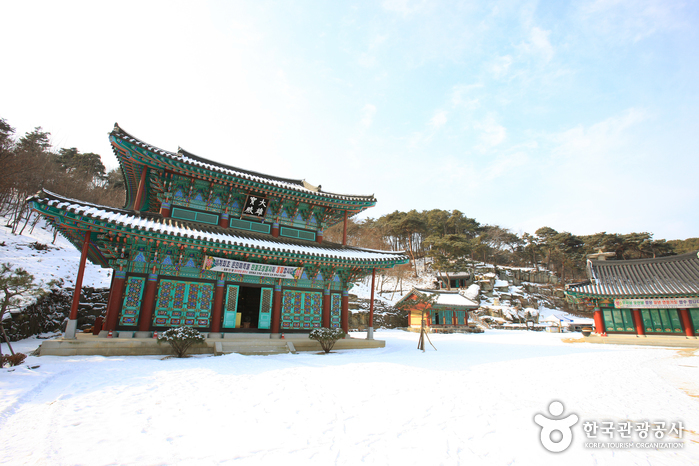
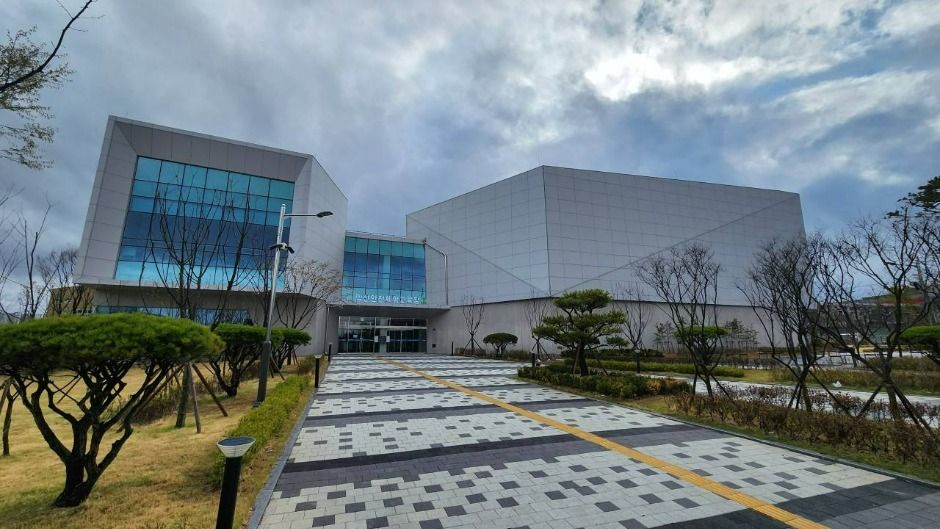
![Mireuksa Temple Site [UNESCO World Heritage] (익산 미륵사지 [유네스코 세계문화유산])](http://tong.visitkorea.or.kr/cms/resource/91/2514991_image2_1.jpg)
![Buyeo Naseong Fortress [UNESCO World Heritage] (부여 나성 [유네스코 세계문화유산])](http://tong.visitkorea.or.kr/cms/resource/71/2725771_image2_1.jpg)
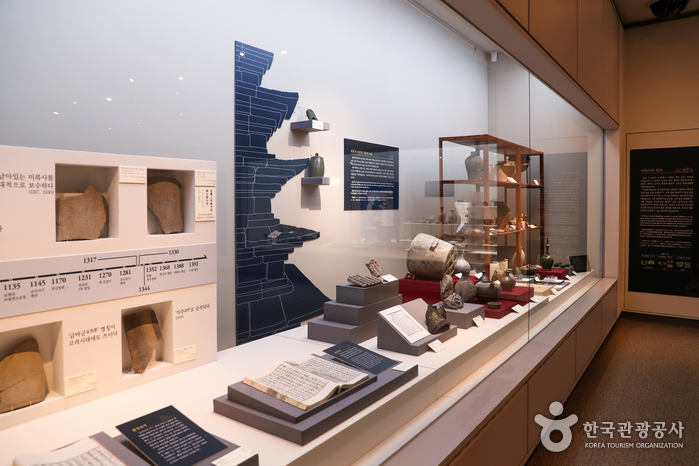

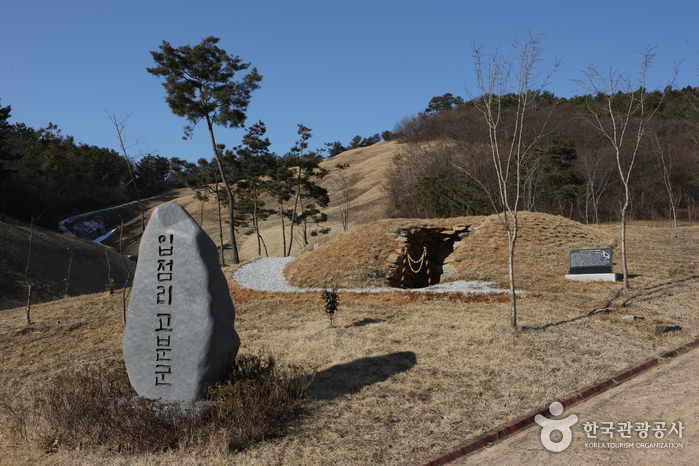
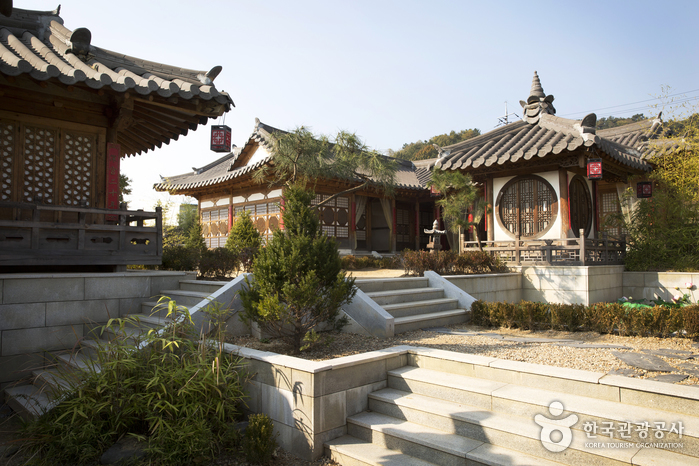
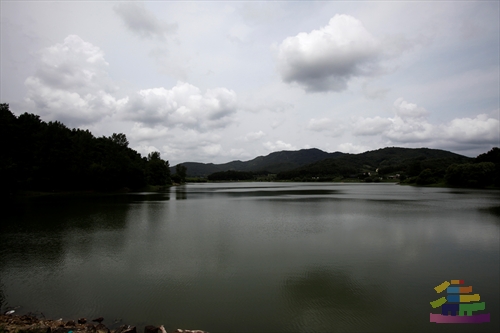
 English
English
 한국어
한국어 日本語
日本語 中文(简体)
中文(简体) Deutsch
Deutsch Français
Français Español
Español Русский
Русский